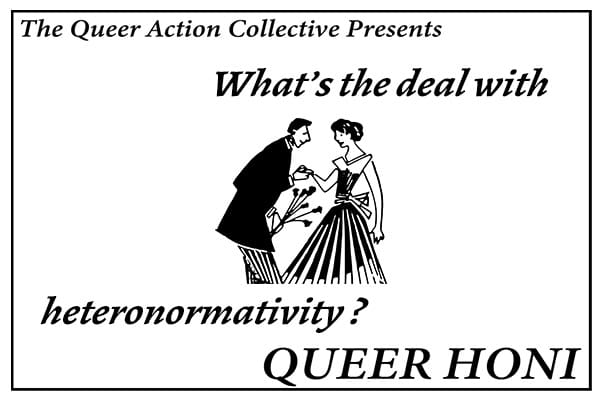There is a song from 2002 which starts off with the lyrics, “He was a boy. She was a girl. Can I make it any more obvious?”. Given that it was one of the most popular songs of its time, you would probably know that it is Avril Lavigne’s “Sk8er Boi”. While the song is not trying to denigrate queer people, those first lines reveal an awfully prevalent social norm, heteronormativity.
Heteronormativity, for those who do not know, is the idea that people are supposed to be attracted to the opposite-gender assuming a strict gender binary. Though the existence of heteronormative assumptions is easily attributed to historical norms, especially the ideologies in conservative religions, it is not often further questioned why this is the case.
A possible answer to this is perhaps from the claims made by conservative religious groups. Many religious fundamentalists use their religious texts to claim that their God/s dictate a heteronormative human natures. Though this is a somewhat substantiated belief, as someone who grew up in evangelical and pentecostal churches, I argue that this view lacks deeper scrutiny.
While religious texts do often contain heteronormative references, these texts are not necessarily singularly coherent or consistent. In larger and heavily edited texts, like the Bible, there are many different possible interpretations, requiring people to ‘pick and choose’ which parts to abide by or ignore regardless of whether they are conscious of it.
Therefore, there is a tendency for many religious groups and people to read their own selves into religion. For example, in 2018, a group of psychologists studied this and found that American Christians chose faces of God that were reflective of themselves. (The faces of God in America: Revealing religious diversity across people and politics)
In this sense, religious heteronormativity, and by extension societal heteronormativity do not necessarily come from religion itself. Rather, it is a matter of individuals in positions of power privileging their own identities and experiences. Straight cisgendered people who were likely ignorant of queer people wove their heterosexuality into religious dogma. Sadly, this harmful dogma is then blindly treated as divine law by some religious congregants, who privilege their personal sense of meaning over other’s welfare.
Over the years, this increasingly vicious dogma has inflicted serious harms through unscientific conversion ‘therapy’, societal rejection, violence and hate crimes. While a majority of Australians have moved away from a religiously motivated heteronormativity, many heteronormative assumptions still persist. The most common of which is that queer people are often stereotypically portrayed based on heteronormative assumptions of binary gender expression.
As such, feminine presenting people are meant to feel attracted towards men, masculine presenting people towards women, transgender people are meant to conform to their gender norms, and other queer people such as bisexual, asexual and non-binary people do not really exist. Many people, including queer people, assume other people’s gender and sexual orientation subconsciously, almost reflexively, based on how much they conform to gender norms.
Indeed, I too have been assumed to be straight many times as I am generally perceived as more masculine than feminine. In one such incident, right before the full brunt of COVID-19 in Australia, a friend of mine, who I was at the beach with, jokingly asked if I was talking to ‘my girlfriend’ after I had spent some time away using my phone.
While this action was not meant maliciously, it illustrates how assumptions of heteronormativity persist even when people are not queerphobic. This is because even though people are generally more tolerant, our popular culture, just like many religious cultures, is still controlled by straight cisgendered people who view the world through themselves. However, good intentions do not negate harm. At that moment, I felt unacknowledged, but I also did not want to risk coming out.
While differing lived experiences can make it difficult for people to look past themselves, assumptions made about other people do not exist in a vacuum. Though they are not at the level of harm caused by religious dogma, casual heteronormative assumptions do cause distress and can lead to the erasure and ‘othering’ of queer people. In light of this, if we want a world where we all can feel safe being ourselves, we all need to disband heteronormativity.





